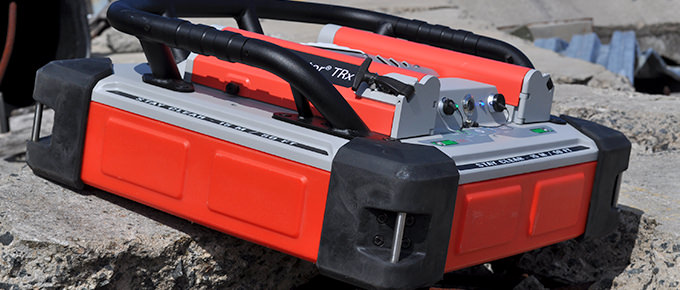Description
The fourth generation of the lifesaving LifeLocator series
The LifeLocator TRx is the newest generation LifeLocator system and employs new, dual receiver technology to increase survey effectiveness and accuracy. The LifeLocator TRx locates live victims trapped at a disaster site for urban search and rescue. It uses ultra-wideband (UWB) technology to detect signs of life when disasters like earthquakes, floods, explosions or similar occurrences result in victims trapped under debris piles.
| Max Depth | Motion: up to 12 m (39 ft) |
| Breathing: | up to 10 m (33 ft) |
| Antenna | 2 Channel – 3 Antennas |
| Weight | 12.7 kg (28 lbs) |
| Storage Capacity | 64/128 GB (tablet dependent) |
| Battery Life | Up to 12 hours, hot-swappable |
| Accessories | Rotating hand strap with stylus holder, Sunshade |
Find Victims
The LifeLocator TRx is a reliable non-human, non-canine USAR technology that enhances search capabilities. Highly sensitive- it can detect slight motion and shallow breathing, within seconds.

Typical Uses
The LifeLocator TRx is typically used for:
- USAR
- Earthquakes
- Terror attacks
- Mine disasters
- Building and structural collapses
- Tunnel collapses
- Mudslides or landslides, with debris
Enhance Survey Capabilities
GSSI’s fourth-generation system uses ultra-wideband (UWB) radar technology with dual sensors to improve the odds of recovering living victims of earthquakes, building collapses, flash floods, avalanches and other man-made disasters.

Advanced Rescue Radar
This wireless and portable system allows for ease of mobility over a site. The non-invasive technology requires no probes or cables.

Data Examples
Breathing
LifeLocator TRx screen examples showing a breathing victim at 7m in depth and breathing at a high rate. The Red line on the left of the screen panel indicates position of victim and at the rights screen panel shows breathing rate and depth of detection. The white line at the bottom of the data indicates presence of radio interference located at the site.

Motion
LifeLocator TRx screen example showing moving person (leg motion) at varying distances away from the sensor. Starting at 11m moving in 1m increments until 2m away from the sensor. The white line at the bottom of the data indicates presence of radio interference located at the site.













